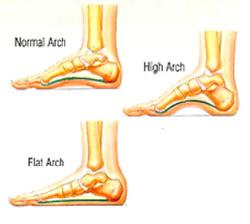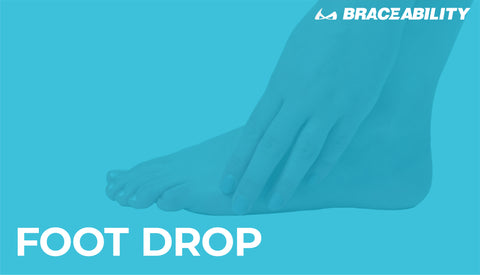Foot Problems: The Complete Guide to Diagnosing Foot & Heel Pain
Common Foot Problems
The foot is a relatively small area of one’s body that is responsible for supporting and transporting body weight as one goes about a number of activities, from standing to dancing to climbing stairs to lifting heavy objects. Considering the amount of stress we put on our feet, it is not surprising that a huge number of people have experienced foot and ankle problems at some point in their life.
In fact, the Institute for Preventive Foot Health (IPFH) conducted a 2012 survey that showed 78% of adults (aged 21 and up) have experienced at least one of the foot problems listed on the survey, with just over half the survey respondents saying they are currently experiencing foot problems. The most common foot problem according to the survey: ankle sprain.
The term “foot and ankle problems” is of course a very vague descriptor. This can be narrowed down toe disorders, foot arch problems, ball of foot problems, foot nail problems, foot joint problems, foot skin conditions and foot sole problems and Achilles heel problems, among other heel disorders.
As you might imagine, the wide number of foot problems comes from an even vaster array of causes, ranging from disorders to stressful activities to foot structure to injury.
Diabetes and Foot Problems
Foot troubles are a common side effect of diabetes. Generally speaking, diabetes foot problems often stem from nerve damage, known as neuropathy. This nerve damage can cause the foot to lose feeling; therefore, one may not notice the formation of a blister or a scrape until it becomes infected or even until ulcers or gout take hold.
Further complicating foot damage due to neuropathy, the poor blood flow associated with diabetes makes the foot less capable of fending off infection and healing. Diabetic socks can also help to improve blood flow to the foot.
These foot nerve problems can also cause the shape of one’s feet or toes to change. This alteration may necessitate the use of special shoes for foot problems
Other foot problems associated with diabetes include dryness of skin, fungal nail infections and the formation of corns, bunions and calluses, etc. For more foot-related side effects of this condition, see “Diabetes and Foot Problems” or check out these diabetic foot problems pictures.
Foot Bone Problems
The structure of some people’s feet also makes them more vulnerable to certain foot disorders. For instance, high arch foot problems, caused by either bone structure or neurological foot conditions, can lead to foot pain, especially in the heel.
One may find relief for foot/heel problems by using lateral heel wedge orthotics or by wearing shoes for people with foot problems. Flat feet, on the other hand, can result in foot alignment problems that in turn can cause trouble with the ankles, knees or even back. Again, there are braces and other orthotics available for correcting flat foot problems.

Common Foot Problems in Women
Foot problems seem to be more common among women than among men, according to the aforementioned study by IPFH. This may in no small part be due to their choice of footwear. Wearing non-supportive shoes is a common reason for foot pain problems, with high heels being a notable offender. Stilettos and the like can cause foot tendon problems, in addition to putting stress on the front of the foot which can cause ball of foot problems as well as toe disorders, particularly bunions.
Indeed, a study by the American Podiatric Medical Association showed 42% of women admitted they would wear an uncomfortable shoe if they liked it and 73% said they had some shoe-related foot issue. Click here for Tips to Avoid Foot Pain from High Heels.
Supportive shoes are also essential for participation in sports. Many foot problems from running and other such activities can be resolved by switching to shoes that provide an adequate level of support.
Foot Problems in Children
A number of conditions that affect adults originate during childhood. For that reason it is important to make sure one’s child has no foot problems requiring pediatric orthotics and that he or she is walking properly (no in-toeing, flat feet, etc.) at any given stage of development. Properly fitting shoes are also important for the rapidly changing and pliable child’s foot.

There are also a number of foot disorders common among children, such as Sever’s Disease (AKA, calcaneal apophysitis). Here is an article featuring guidelines on child foot health.
Other Common Foot Disorders
Foot and ankle disorders can also stem simply from being on one’s feet for long periods of time, engaging in activities like ballet or operating power equipment, as this can put an inordinate amount of stress on the foot. Often, this results in plantar foot problems, or plantar fasciitis. This condition is characterized by a stabbing sensation in one’s heel. Use of plantar fasciitis braces and orthotics, such as shoe inserts or night splints, can be helpful for remedying such heel conditions.
Achilles tendonitis is another painful foot problem that can stem from atypical arches in one’s feet, frequent changes in heel heights and (most common) a sudden increase in sports activity. The pain associated with this foot tendon problem will be located in the region just above the heel where the Achilles tendon is located. Treatment most involves rest, exercise, stretches and possibly use of an Achilles tendonitis brace or night splint.
Foot drop, or drop foot, is actually a symptom of a number of disorders of the foot that can range from neurological to anatomical to muscular. Foot drop is characterized by an inability to lift the front part of the foot. To compensate for this scuffing of the toes, individuals often assume what is known as a “steppage gait” with a high knee lift to avoid dragging the front of the foot and toes across the ground, which can cause tripping.
Drop foot braces and splints can help correct this abnormal gait by supporting the foot. Whether drop foot can be cured, however, depends upon whether the causal condition can be treated.
The list of foot problems could go on and on, but this article is meant to provide a brief overview of some of the more common foot and ankle conditions rather than a comprehensive list of foot health problems.
As with most medical ailments, it can be unwise to self-diagnose. One should enlist the help of a medical professional for proper treatment.










